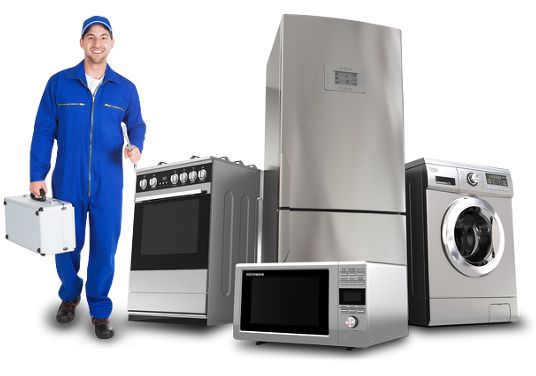

Smart homes are residences that are equipped with advanced technology and automation systems to control various aspects of the home, such as lighting, climate control, security, and entertainment. These systems are designed to enhance convenience, comfort, energy efficiency, and security for homeowners. Electronics installation plays a crucial role in setting up and integrating these smart home systems.
Electronics installation involves the installation and setup of various electronic devices and systems in a home. This can include everything from installing smart thermostats and lighting controls to setting up home theater systems and security cameras. Proper installation is essential to ensure that these devices function correctly and seamlessly integrate with each other.
The Benefits of Smart Homes for Modern Living
Smart homes offer numerous benefits for modern living. One of the main advantages is increased convenience and comfort. With smart home automation, homeowners can control various aspects of their homes with just a few taps on their smartphones or voice commands. They can adjust the temperature, turn on/off lights, lock/unlock doors, and even start appliances remotely.
Another significant benefit of smart homes is energy efficiency. Smart thermostats can learn the homeowners’ preferences and adjust the temperature accordingly, resulting in energy savings. Smart lighting systems can automatically turn off lights when no one is in the room, reducing electricity consumption. These energy-saving features not only help the environment but also save homeowners money on their utility bills.
Improved security is another advantage of smart homes. With smart security systems, homeowners can monitor their homes remotely through security cameras and receive real-time alerts if any suspicious activity is detected. They can also lock/unlock doors remotely and even grant access to visitors without being physically present.
Smart homes also offer enhanced entertainment options. Homeowners can set up home theater systems with surround sound speakers and control them through their smartphones or voice commands. They can stream music throughout the house using wireless speakers or create personalized playlists for different rooms.
The Role of Electronics Installation in Crafting Smart Homes
Proper electronics installation is crucial for setting up and integrating smart home systems. Without professional installation, homeowners may face issues with compatibility, functionality, and reliability of their smart home devices.
Electronics installation professionals have the expertise and experience to ensure that all devices are installed correctly and function seamlessly. They can help homeowners choose the right devices for their specific needs and integrate them into a cohesive system. They can also troubleshoot any issues that may arise during the installation process.
There are various types of electronics that are installed in smart homes. These can include smart thermostats, lighting controls, security cameras, door locks, home theater systems, and more. Each of these devices requires proper installation to ensure that they work correctly and integrate with other devices in the system.
Integration is a crucial aspect of smart home systems. Electronics installation professionals can ensure that all devices are properly integrated so that they can communicate with each other and work together seamlessly. For example, a smart thermostat can communicate with a smart lighting system to automatically adjust the lights based on the temperature settings. Integration allows homeowners to control multiple aspects of their homes through a single interface, such as a smartphone app or voice assistant.
Smart Home Automation: The Future of Home Technology
Automation is a key feature of smart homes. It refers to the ability of devices and systems to perform tasks automatically without human intervention. Automation allows homeowners to set up schedules and rules for their smart home devices, so they can operate on their own based on predefined conditions.
There are numerous examples of automated systems in smart homes. For example, homeowners can set up schedules for their smart thermostats to adjust the temperature at specific times of the day. They can also create rules for their smart lighting systems to turn on/off lights based on occupancy or time of day. Automated security systems can arm/disarm themselves based on the homeowners’ location or a predefined schedule.
Automation offers several advantages for homeowners. It enhances convenience by eliminating the need for manual control of devices. It also improves energy efficiency by ensuring that devices operate only when needed. For example, lights can automatically turn off when no one is in the room, and thermostats can adjust the temperature based on occupancy. Automation also enhances security by providing an extra layer of protection. For example, homeowners can set up rules for their security cameras to start recording when motion is detected.
The Importance of Professional Electronics Installation Services
When it comes to electronics installation for smart homes, it is essential to hire professional installation services. There are several reasons why professional installation is important.
Firstly, professionals have the expertise and experience to ensure that all devices are installed correctly and function seamlessly. They are familiar with the specific requirements of different devices and can troubleshoot any issues that may arise during the installation process. They can also provide guidance on choosing the right devices for specific needs and integrate them into a cohesive system.
Secondly, professional installation services offer a higher quality of work compared to DIY installation. They have access to specialized tools and equipment that are necessary for proper installation. They also follow industry best practices and standards to ensure that all installations are safe and reliable.
Lastly, professional installation services often come with warranties and support. If any issues arise after the installation, homeowners can rely on the professionals to provide assistance and resolve the problems. This gives homeowners peace of mind knowing that they have support in case anything goes wrong.
Understanding the Components of a Smart Home System

A smart home system consists of various components that work together to create an intelligent and automated living environment. These components include smart home hubs, sensors and detectors, smart appliances, and smart lighting and climate control systems.
Smart home hubs are central devices that connect and control all other smart devices in the home. They act as a communication hub, allowing homeowners to control and monitor their smart devices through a single interface, such as a smartphone app or voice assistant. Smart home hubs can also integrate with other systems, such as security systems and entertainment systems, to provide a seamless user experience.
Sensors and detectors are essential components of a smart home system. They can include motion sensors, door/window sensors, smoke detectors, and carbon monoxide detectors. These sensors and detectors provide information about the environment and trigger actions based on predefined conditions. For example, a motion sensor can detect movement in a room and turn on the lights automatically.
Smart appliances are another important component of a smart home system. These can include smart thermostats, smart refrigerators, smart washing machines, and smart ovens. Smart appliances offer advanced features and connectivity options that allow homeowners to control and monitor them remotely. For example, a smart thermostat can be controlled through a smartphone app to adjust the temperature settings.
Smart lighting and climate control systems are key components of a smart home system. These systems allow homeowners to control the lighting and temperature of their homes remotely. They can create schedules and rules for their lighting systems to turn on/off lights based on occupancy or time of day. Smart climate control systems can adjust the temperature settings based on the homeowners’ preferences or occupancy.
Smart Home Security: Protecting Your Home with Electronics Installation
Security is a top priority for homeowners, and smart home security systems offer advanced features and capabilities to protect homes from intruders and other threats. Electronics installation plays a crucial role in setting up and integrating these security systems.
There are various types of security systems that can be installed in smart homes. These can include security cameras, door/window sensors, motion sensors, door locks, and alarm systems. Each of these devices requires proper installation to ensure that they function correctly and integrate with other devices in the system.
Smart home security offers several benefits for homeowners. Firstly, it provides remote monitoring and control of the home. Homeowners can monitor their homes through security cameras and receive real-time alerts if any suspicious activity is detected. They can also control their security systems remotely, such as arming/disarming the alarm or locking/unlocking doors.
Integration is another advantage of smart home security systems. These systems can be integrated with other smart home devices, such as lighting and climate control systems, to provide a comprehensive and cohesive security solution. For example, homeowners can set up rules for their security cameras to start recording when motion is detected and turn on the lights in the area.
The Cost of Electronics Installation for Smart Homes
The cost of electronics installation for smart homes can vary depending on various factors. These factors include the size of the home, the complexity of the system, the number of devices to be installed, and the level of customization required.
On average, the cost of electronics installation for a smart home can range from a few thousand dollars to tens of thousands of dollars. This cost includes the purchase of smart devices and the labor cost for installation. The cost can be higher for larger homes or homes with more advanced features and customization.
While the upfront cost of electronics installation for smart homes may seem high, there are cost savings over time. Smart home systems offer energy-saving features that can reduce utility bills. For example, smart thermostats can adjust the temperature based on occupancy, resulting in energy savings. Smart lighting systems can automatically turn off lights when no one is in the room, reducing electricity consumption. These energy-saving features can add up over time and offset the initial cost of installation.
DIY vs Professional Electronics Installation: Which is Best for You?
When it comes to electronics installation for smart homes, homeowners have the option to do it themselves (DIY) or hire professional installation services. Both options have their pros and cons, and homeowners should consider several factors when making a decision.
DIY installation can be a cost-effective option for homeowners who have the necessary skills and knowledge. It allows homeowners to save on labor costs and have full control over the installation process. DIY installation also offers flexibility, as homeowners can choose the devices and systems that best suit their needs and preferences.
However, DIY installation can be time-consuming and challenging, especially for homeowners who are not familiar with electronics and technology. It requires research, planning, and troubleshooting skills. DIY installation also carries the risk of improper installation, which can lead to compatibility issues, functionality problems, and even safety hazards.
Professional installation offers several advantages for homeowners. Firstly, professionals have the expertise and experience to ensure that all devices are installed correctly and function seamlessly. They can provide guidance on choosing the right devices for specific needs and integrate them into a cohesive system. Professional installation also comes with warranties and support, giving homeowners peace of mind knowing that they have assistance in case anything goes wrong.
However, professional installation can be more expensive compared to DIY installation. Homeowners need to consider their budget and weigh the cost against the benefits of professional installation. They should also consider their own skills and knowledge in electronics installation before deciding whether to hire professionals or do it themselves.
Choosing the Right Electronics Installation Company for Your Smart Home
When choosing an electronics installation company for your smart home, it is important to do thorough research and consider several factors. Here are some tips to help you choose the right company:
1. Research potential companies: Look for companies that specialize in electronics installation for smart homes. Check their websites, read customer reviews, and ask for recommendations from friends or family members who have had similar installations done.
2. Ask the right questions: When contacting potential companies, ask them about their experience, certifications, and warranties. Inquire about their process for installation and integration of smart home systems. Ask for references from previous clients to get an idea of their work quality.
3. Evaluate quotes and proposals: Get quotes from multiple companies and compare them. Look for detailed proposals that outline the scope of work, the devices to be installed, and the timeline for completion. Consider the cost, but also consider the expertise and reputation of the company.
4. Check references and reviews: Contact references provided by the company and ask about their experience with the installation process and the quality of work. Also, check online reviews and ratings to get a broader perspective on the company’s reputation.
Choosing the right electronics installation company is crucial to ensure that your smart home system is installed correctly and functions seamlessly. Take your time to research and evaluate potential companies to make an informed decision.


